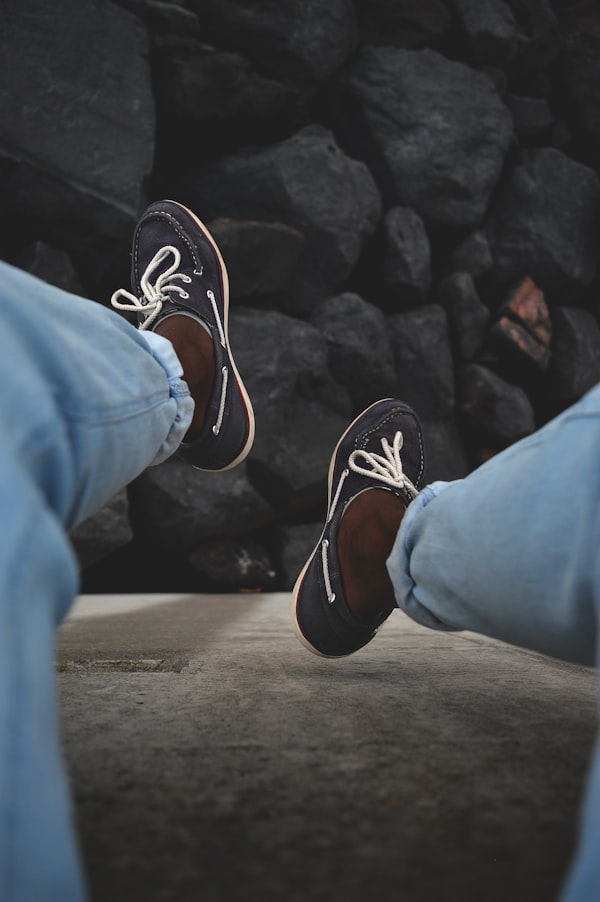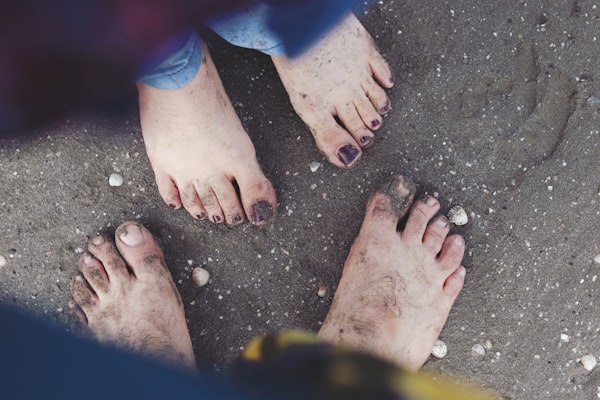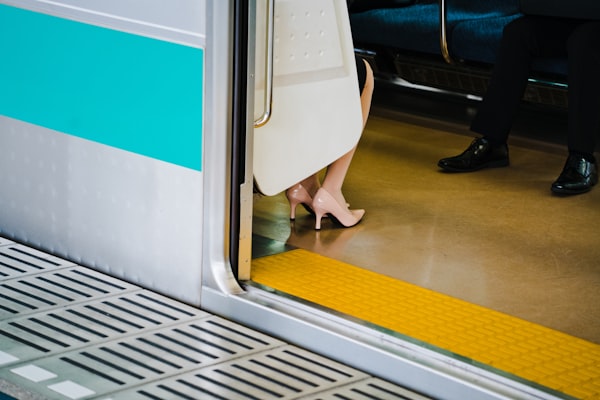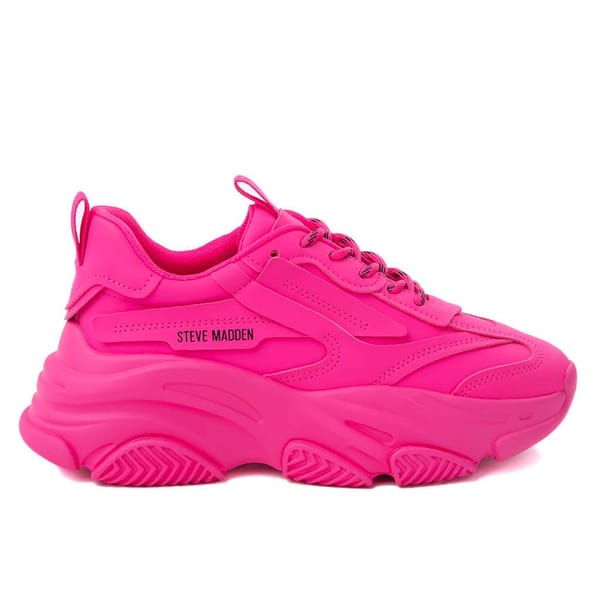Have you ever slipped into shoes that felt like small boats instead of footwear? We've all been there—excited about that online sale steal or the gifted sneakers from a loved one, only to find our feet swimming laps inside them. This is the tale of shoes that just aren't your size. But fear not, Cinderella, because not every shoe mismatch needs a fairy godmother!
Wearing shoes that are too big isn't just about awkwardly clomping around like a clumsy giant; it's a veritable invite to the blisters ball, not to mention a gambol with potential foot maladies. Comfort and health stride hand-in-hand when it comes to properly fitting shoes. After all, nobody wants to face the double trouble of sore feet and a faltering fashion statement.
Lucky for you, this isn't our first rodeo in the oversized shoe arena. Buckle up (or should we say, lace up?) as we're about to embark on a footloose journey filled with practical, easy-to-follow solutions that will ensure your big shoes fit as snug as a bug in a rug—or at least as close to it as we can get without a visit from Prince Charming.
Why Are My Shoes Too Big?
It's a question as old as online shopping carts and well-meaning relatives. There are several reasons why you might find yourself staring down at a pair of oversized loafers:
- Online Shopping Surprises: The convenience of clicking to buy can come with unexpected results. Sizing can vary widely between brands or even between different styles from the same brand. And let's face it, sometimes we play shoe size roulette during online sales, hoping the fit is just right.
- Gifted Guesses: Shoes are a popular gift, but sizing can often be more of an educated guess than a certainty. Even with the best intentions, your aunt might not nail your shoe size every time, especially if she's basing it on how big you were at your last family reunion.
- Sale Seduction: Bargains have a way of blinding us. A killer shoe deal can tempt us to buy a size too large, especially if our preferred size is sold out. It's the old "they might fit if I wear three pairs of socks" optimism.
The Trouble with Too-Big Shoes
Wearing shoes that don't fit properly isn't just a fashion faux pas—it can also lead to a parade of problems:
- Blisters and Abrasions: When your foot slides and rubs against the interior of a shoe that's too spacious, it can lead to painful blisters and skin abrasions. Each step can feel like a tiny torture session.
- Gait Disturbances: Oversized shoes affect how you walk. The effort to keep them on can alter your stride and posture, potentially leading to joint stress and muscle strain over time. You might find yourself shuffling instead of striding, which can look as awkward as it feels.
- Toe Deformities: Clenching your toes to keep your shoes on? Over time, this can cause or exacerbate issues like hammer toes or bunions. It's not exactly the "extra room" you'd want in footwear.
Understanding these risks highlights why finding a solution isn't just about comfort or aesthetics—it's a step towards healthier walking habits. Let's dive into how we can address this oversized issue with some snug solutions.
Quick Fixes and Household Solutions
Sometimes, a little ingenuity with items you have around the house can transform those oversized shoes into a comfortable fit. Here are a few clever tricks:
1. Sock it Up
When life gives you big shoes, fill them with socks! Thicker socks or doubling up on your usual pairs can be a quick fix to fill out shoes that are too large. This is especially useful in colder climates where the extra insulation can be a cozy benefit. Remember, though, this method works best for a slight size discrepancy and might not be ideal for shoes several sizes too big.
2. Toe Inserts
If you're dealing with extra room in the toe area, it's time to get crafty with some DIY toe inserts. You can use materials like cotton balls, sponge pieces, or even soft foam cut to size. Simply stuff these materials into the space at the front of the shoe to achieve a better fit. For a more durable solution, you might consider purchasing commercial toe fillers specifically designed to sit comfortably in the toe box and stay in place as you walk.
3. Heel Grips
Slipping heels are more than just annoying—they can cause blisters and make walking a precarious endeavor. To combat this, try using adhesive heel grips. These padded inserts stick to the inside of your shoe's heel area and provide both cushioning and a tighter fit. They're beneficial for preventing your foot from sliding out, ensuring each step you take is secure. Heel grips are available in various thicknesses and materials, allowing you to choose the best padding level.
Advanced Fitting Techniques
For those needing a more robust solution to manage oversized shoes, a few advanced techniques can provide a longer-term fit and added comfort. These methods go beyond simple home remedies, offering solutions that can significantly adjust how your shoes interact with your feet.
1. Insoles and Orthotics
Full-length insoles are a fantastic way to enhance the fit of a shoe that's too large. By inserting a layer of supportive material, you not only fill excess space but also gain the benefits of improved arch support and cushioning. This can lead to better posture and reduced foot fatigue, which is especially beneficial if you spend a lot of time on your feet.
There are various types of insoles, including those made from memory foam, gel, or hard plastic, each providing different levels of support and comfort. Orthotics, often custom-made based on a podiatrist's prescription, can correct specific foot issues and alter foot alignment, making them a dual-purpose solution for fit and health.
2. Tongue Pads
Sometimes, the problem isn't just the overall size; it's the fit around the midsection of the foot. Tongue pads are an excellent solution for this. These cushioned pads stick to the underside of the shoe's tongue, pushing the foot back into the heel where it belongs and reducing the space around the instep. This ensures a snug fit and prevents the foot from sliding forward, a common issue in shoes that are too long.
3. Shoe Fillers
Shoe fillers can be a game changer for those with significantly oversized shoes or when only one foot needs adjusting due to size differences between feet. These specially designed products fill the empty space in the toe box or along the sides of the shoes. Unlike homemade stuffing solutions, shoe fillers are shaped to conform to the shoe's interior, providing a stable and comfortable fit without altering the shoe's look.
Shoe fillers benefit individuals who need to balance out a size discrepancy or have found the perfect pair of shoes too large to pass up. They come in various materials and sizes, allowing for a customized fit to make even a larger shoe feel like it was made just for you.
Temporary Adjustments
Sometimes, the situation calls for a quick fix that doesn't involve permanent changes to your shoes. Temporary adjustments can be especially useful when you only need a tighter fit for a short period or when using borrowed or rented footwear.
1. Shoe Straps
Adjustable shoe straps can provide a much-needed solution for oversized shoes. These straps can be attached to shoes with hooks or adhesives and tightened to enhance the fit. They work particularly well with high heels or slip-ons that lack sufficient grip on the foot. By securing the strap snugly over the top of your foot, you can minimize slipping and improve stability.
2. Lacing Techniques
Changing the way you lace your shoes can significantly impact how they fit. For shoes too large, try lacing techniques that tighten the shoe more effectively around your foot. For instance, using a "lace lock" or "heel lock" method can prevent your foot from sliding forward by securing the ankle and heel area more tightly. This is particularly useful in athletic shoes, where foot movement within the shoe can affect performance and comfort.
Professional Help and Long-Term Solutions
When DIY solutions and temporary fixes don't cut it, it might be time to seek professional help. Shoe cobblers have various techniques that can permanently alter the size and fit of your footwear.
A skilled cobbler can often resize a shoe down with methods that might involve altering the soles or taking in material at the seams. This is a more expensive option but can be worth the investment for high-quality or designer shoes that would be costly to replace. Cobblers can also stretch slightly too tight shoes, providing a perfect fit.
Before heading to the cobbler, consider the cost-effectiveness of altering your shoes versus purchasing new ones. Professional adjustments can be a worthwhile expense for expensive or special footwear. However, for cheaper or less significant pairs, simply replacing them might be more economical.
Professional shoe adjustments can ensure a perfect fit and even extend your shoes' life. When quick fixes and home remedies aren't enough, turning to a professional can provide a tailor-made solution that ensures comfort and style are not compromised.
Tips From Our Editors
Navigating the world of shoe sizes doesn't have to be a trial-and-error ordeal. By employing a few strategic practices, you can ensure that the shoes you buy fit well from the start, minimizing the need for adjustments later.
Tip 1: Timing Your Shoe Shopping
It's a little-known fact that your feet tend to swell throughout the day due to walking and standing. To get the best fit when trying on new shoes, shop in the late afternoon when your feet are at their largest. This ensures that the shoes will be comfortable at any time of day and helps avoid purchasing shoes that feel tight after a long day.
Tip 2: Measuring Your Foot Size at Home
Knowing your exact foot size is crucial, especially when ordering shoes online. You can measure your foot size at home by placing your foot on a piece of paper, tracing around it, and then measuring the longest and widest points with a ruler. Compare these measurements to online size charts, which most shoe stores provide. Remember to measure both feet, as it's common for one foot to be slightly larger than the other. Always choose the shoe size that fits the larger foot.
Tip 3: Avoiding Sizing Issues When Buying Online
When shopping for shoes online:
- Always refer to the brand's specific sizing chart.
- Read customer reviews for insights on whether shoes run large, small, or true to size.
- Look for online retailers that offer free returns. This minimizes the risk as you can return shoes that don't fit properly.
- Familiarize yourself with the shoe's materials. Leather can stretch over time, while synthetic materials might not offer the same give.
- Consider the type of shoe. For instance, pointy-toed shoes might require a larger size than your sneakers.
On a Final Note
Navigating the world of oversized shoes doesn't have to feel like a tightrope walk over a canyon of discomfort. We've explored a variety of techniques to make those roomy sneakers, loafers, or pumps feel like they were made just for you—from stuffing socks to consulting cobblers. Whether employing quick household hacks like thicker socks and toe inserts or opting for more advanced solutions like full-length insoles and custom shoe fillers, each method has its merits and can be tailored to your specific needs.
We encourage you to experiment with these methods to discover the best results for your feet. It might be that a combination of techniques works best, or perhaps a simple adjustment like a tongue pad makes all the difference. The journey to a perfect fit is often one of trial and improvement, so don't be afraid to try different approaches.
Remember, the ultimate goal is to make your shoes fit and ensure that they're comfortable and support your foot health. Properly fitting footwear is crucial for avoiding foot problems and ensuring you can walk, run, and move without pain or discomfort. As you adjust your shoes, remember that the best fit offers a balance of comfort, support, and style.
By adjusting your big shoes correctly, you're not just making a fashion statement—you're taking a step towards maintaining healthy, happy feet.
Related Articles









